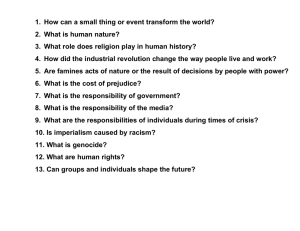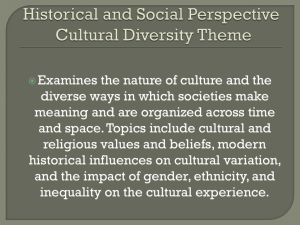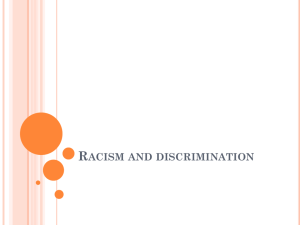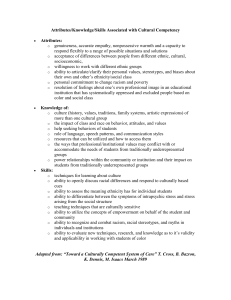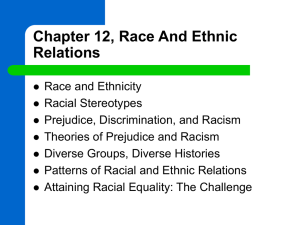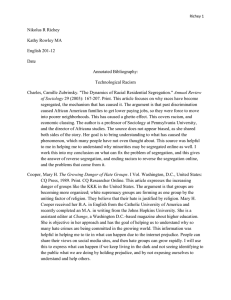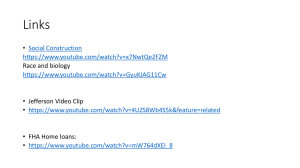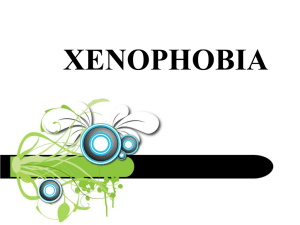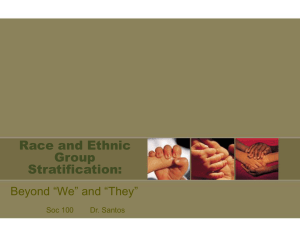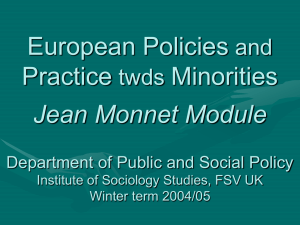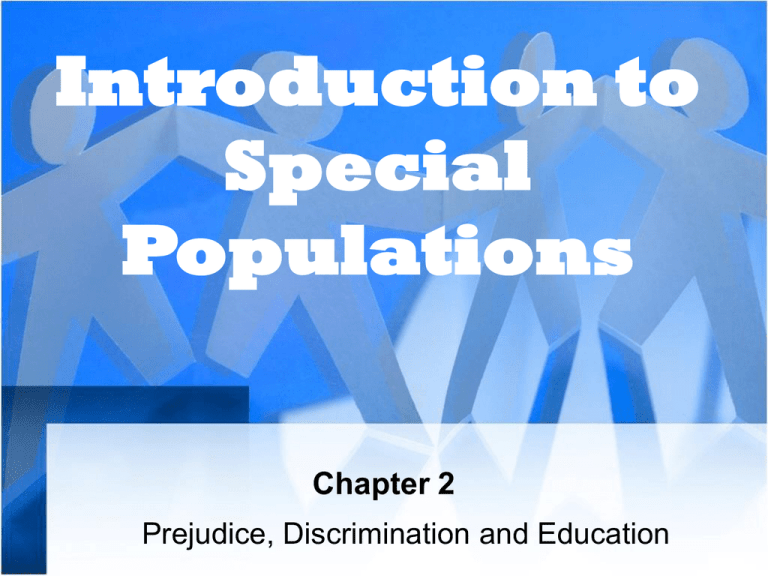
Introduction to
Special
Populations
Chapter 2
Prejudice, Discrimination and Education
Definitions
• Prejudice - bigotry based on racial,
ethnic, gender or religious grounds
• Discrimination - an action or behavior
based on prejudice
• Racism - systemic or institutional
conditions that provide some people
more consistent and easier access to
opportunity based on race or ethnicity
Definitions
• Marginalization – an oppressed group with a
low status in society
• Ethnocentrism – a view that one’s own group
is the center of everything
• Acculturation – extinguishing customs
associated with a culture
• Assimilation – dominant culture accepts a
minority group as respected member of societ
• Cultural Inversion – rejecting certain forms o
behavior as inappropriate for a group because
behaviors seen as “White”
The Story of Sandor Teszler
www.ted.com/talks/ben_dunlap_talks_about_a_pas
sionate_life.html
Identify four types of racism.
•
•
•
•
Individual racism
Institutional racism
Cultural racism
Aversive racism
©2012 Cengage Learning.
All Rights Reserved.
Affirmative Action
Federal contractors are required to take
affirmative action to ensure that all applicants,
without regard to their race, color, religion, sex,
or national origin, were hired and treated fairly
in their employment and to use every effort
necessary to implement strategies that would
result in equal employment opportunities for
historically disadvantaged groups.
©2012 Cengage Learning.
All Rights Reserved.
For Reflection and Discussion
Have you ever experienced prejudice or discrimination?
-- how did you feel?
-- what did you do?
What is important to you about your ethnicity?
-- how did you first learned about your own ethnicity?
What messages have you received about:
– ways different racial groups are treated
– what it means to be male and female
– how disabilities are viewed
– how religious affiliation impacts respect
• Children as young as 18 months notice race.
• By the age of three, children will start choosing to play
with people of their own race more than people of
another race.
• When we abstain from discussing race with our kids,
we may confuse them and implicitly send the
message that it is bad or wrong to talk about racial
differences.
• Research suggests that parents should be more proactive in recognizing and discussing racial differences
while communicating it is wrong to hold racial
prejudices. Allison Briscoe-Smith & Rodolfo Mendoza-Den ton “Greater Good”
Guidelines for Helping Young Children
Confront Prejudice
•
•
•
•
•
•
•
Respond Promptly
Give simple answers
Model respectful behavior
Acknowledge children’s fears
Clarify misconceptions
Introduce differences via books
Offer children experiences with real
people
Teacher Learning
• Identify own attitudes about prejudice
• Acquire knowledge of cultures
• Understand systemic/institutional issues
related to equity
• Implement a fair and equitible pedagogy
for students
Students
• Deserve a fair, safe environment
• Deserve high expectations and
standards
• Equitable resources and
opportunities

